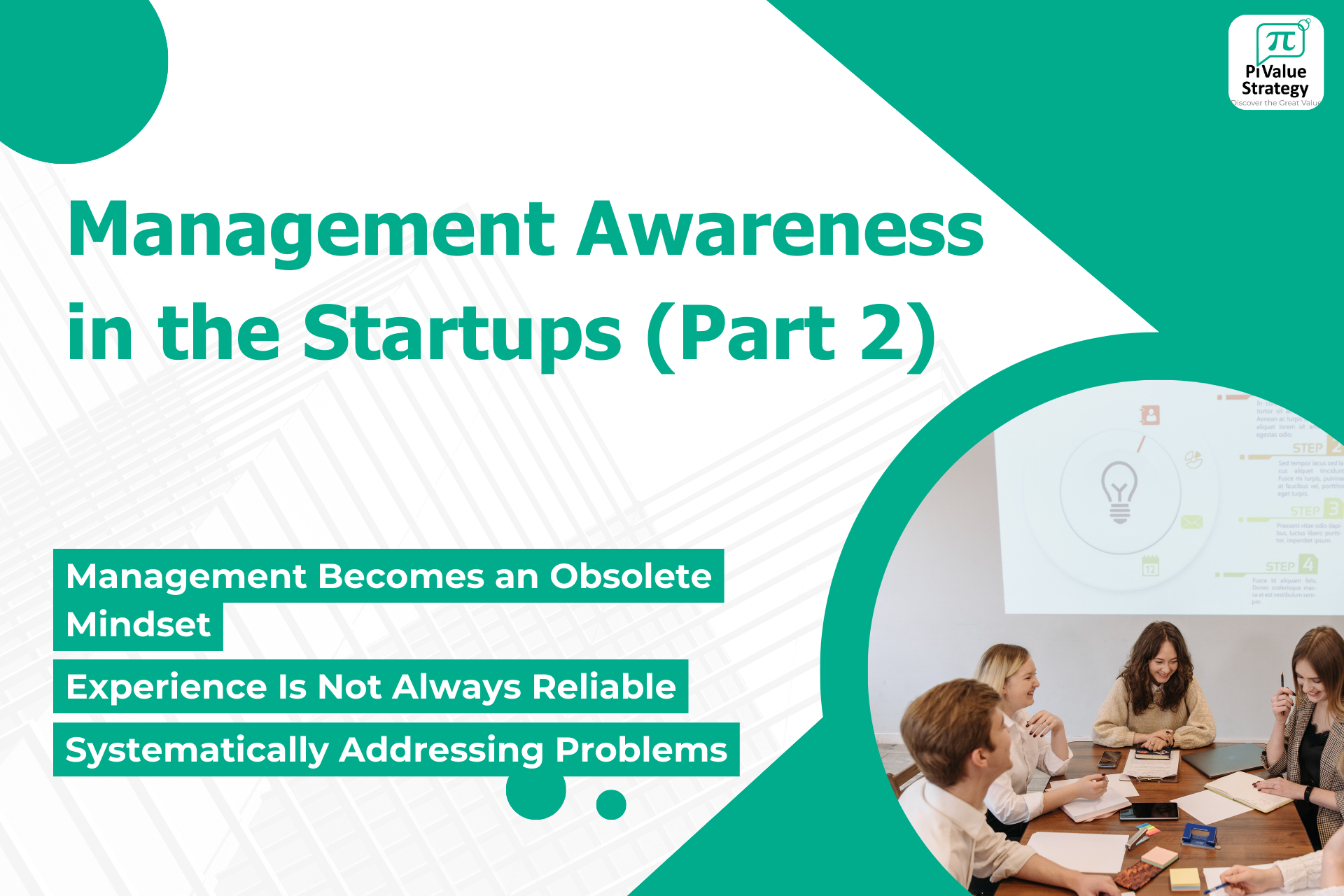In the previous article, we mentioned that every advanced business concept ultimately needs to be transformed into a practical execution system and process, implemented consistently and thoroughly, to achieve results and outcomes. We can call this execution excellence. Execution excellence can be summarized into four key aspects: strategic focus and clarity, execution cycle, problem-solving, and organizational strength.
In this article, we want to discuss another management phenomenon in the startup community.
Management Becomes an Obsolete Mindset
Many founders have keenly identified business opportunities and, combined with their strong initiative, have created some achievements and established a foothold in the market. As a result, they often become enamored with market trends and popular business topics. Even in terms of management, they merely follow the quotes and shared insights of star entrepreneurs superficially.
Especially when top industry entrepreneurs share their experiences and methodologies, no matter what they say, startups feel it’s correct and worth learning, giving them an epiphany. However, such learning and management styles lack consistency and systematization, and their limitations become particularly evident as the company scales up.
The current trend is artificial intelligence (AI). We can observe in the recent projects we’ve come across that almost every industry, without exception, uses AI development as a selling point. While this indeed piques the interest of customers, suppliers, and investors, rather than blindly following trends or imitating top-tier companies, we should seriously consider fundamental questions: Who are our customers? What value can we truly create for them? How much real demand can our products or services satisfy? How much actual value can our projects generate?
The management challenges faced by startups are not only from market competition and technological innovation pressure but also from their lack of effective management mechanisms to cope with increasingly complex business operations. Problems like insufficient management teams, chaotic organizational structures, and opaque decision-making processes can all lead to a decline in operational efficiency and even the collapse of the company.
Management science has a history of over a hundred years, with concepts that have become quite mature. Even though many modern entrepreneurs claim that startup management differs from traditional management, upon closer examination, you can still see that past management masters described the same concepts with different terminology. In terms of management, we do not need to deliberately pursue disruption, trends, or new generations. We should not rely on insights from star entrepreneurs and external mentors to address individual organizational problems.
Experience Is Not Always Reliable
Does our suggestion to not rely on the experiences of successful companies mean we can rely on our own experiences? In fact, many business managers habitually solve management problems reflexively based on their existing experiences and common sense first. They learn from the experiences of other successful companies only if they lack relevant experience. If the initial conditions remain unchanged, these experiences can be useful, and we can replicate success. But if we do not understand the underlying logic, these so-called “successful experiences” can sometimes be unreliable.
Whether they are someone else’s experiences or our own, they should not be fully relied upon (especially when the experiences are not systematically summarized) for four reasons:
- Experience summaries often have key premises that the sharer cannot explain in detail. A small difference can lead to a huge deviation.
- Experiences may suffer from survivorship bias, leading to erroneous conclusions and overgeneralization.
- The results produced by experience may no longer be optimal or even correct over time.
- The experiences summarized at the time may contain critical factors that we cannot observe. Since the result was good, these factors were attributed to the experience summary, which may lead to errors in the future.
If we operate our startups solely based on existing experiences, we may miss key opportunities for reform and innovation, because innovation requires us to systematically think about the essence of the industry and experiment with new concepts. When Seiji Suzuki founded 7-Eleven, he deeply understood the “unchangeable” in the convenience store industry—the customers’ demand for convenience. This insight did not simply follow the traditional retail model but systematically thought about the essence of the industry and continuously experimented with new concepts to meet the diverse needs of customers. 7-Eleven not only sold food but also provided services like utility bill collection, ATMs, and magazine sales, making convenience stores a terminal service center in the community. It was this deep understanding of industry constants and continuous experimentation with new concepts that made consumers’ lives inseparable from 7-Eleven.
It is worth mentioning that, compared to successful experiences, learning from others’ failures can be more valuable. When successful people reveal their experiences or even formulas, following them may not necessarily lead to success. However, if someone shares, “I failed because I did something,” you can be almost certain that if you follow suit, you will fail too.
Systematically Addressing Problems
In the management process, especially when facing unconventional problems, we recommend borrowing the method of scientific experiments, adopting the “Hypothesis – Testing – Validation/Conclusion – Adjustment” cycle. This method helps to systematically solve problems and avoid decision biases caused by experiences.
The “Hypothesis – Testing – Validation/Conclusion – Adjustment” cycle means that the solution we propose for a certain problem is essentially a hypothesis. Because these solutions have not been fully verified when proposed, we cannot directly determine their effectiveness. This scientific spirit allows us to remain objective and avoid falling into the experience trap. For example, a software company finds that the user retention rate of a new product is low. After initial investigation, the team hypothesizes that the problem lies in poor user experience (UX) design. Thus, they propose a hypothesis that improving UX design can increase user retention.
Once the hypothesis is established, we can conduct small-scale trials in the market, collect results or feedback, and then organize conclusions and verify the hypothesis. If the hypothesis is validated and there is sufficient positive feedback, the conclusion is reliable, and we can make larger investments. Otherwise, we need to make adjustments. For example, the software company might choose to introduce the improved UX design to a subset of users and conduct a three-month test. By comparing the retention rate data of the test group and the control group, the team finds that the improved UX design significantly increases user retention. After verifying the hypothesis, the company decides to fully implement the UX improvement for all users.
If the hypothesis fails to be verified or the results are inconclusive, adjustments need to be made. This could mean adjusting the testing method or rethinking the hypothesis itself. If the software company’s test results do not support the hypothesis, the team would go back to the initial stage of the problem, reevaluating other factors that might affect user retention, such as missing features or performance issues.
The “Hypothesis – Testing – Validation/Conclusion – Adjustment” cycle is a scientific management method that helps us make more rational and systematic decisions when facing complex problems. Through this method, we can not only improve the efficiency of problem-solving but also continuously optimize our decision-making process, making it more scientific and effective.

